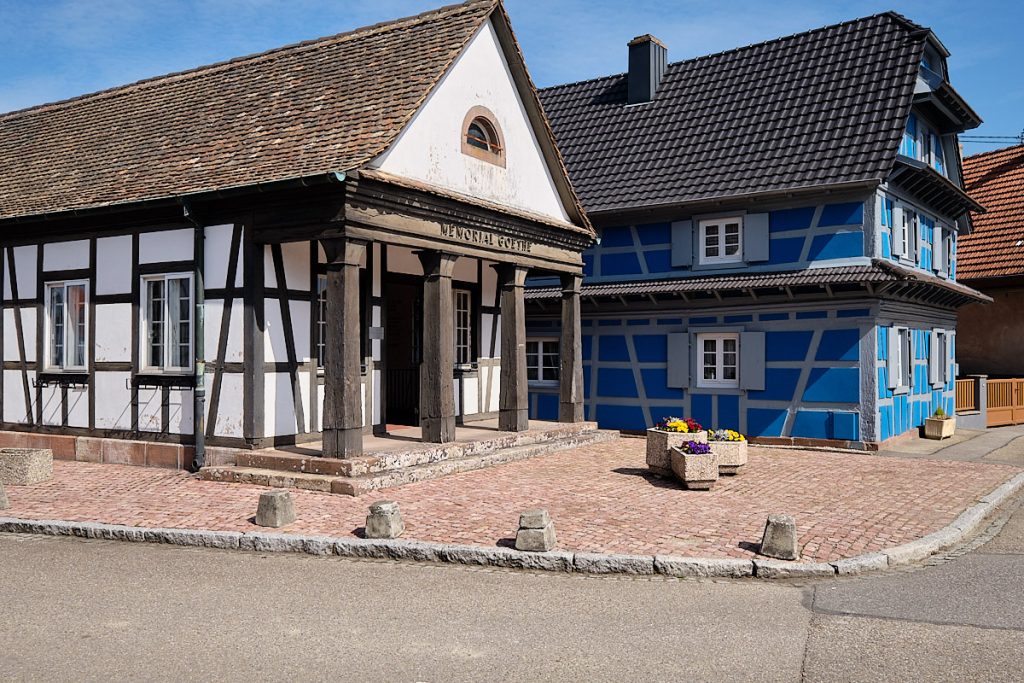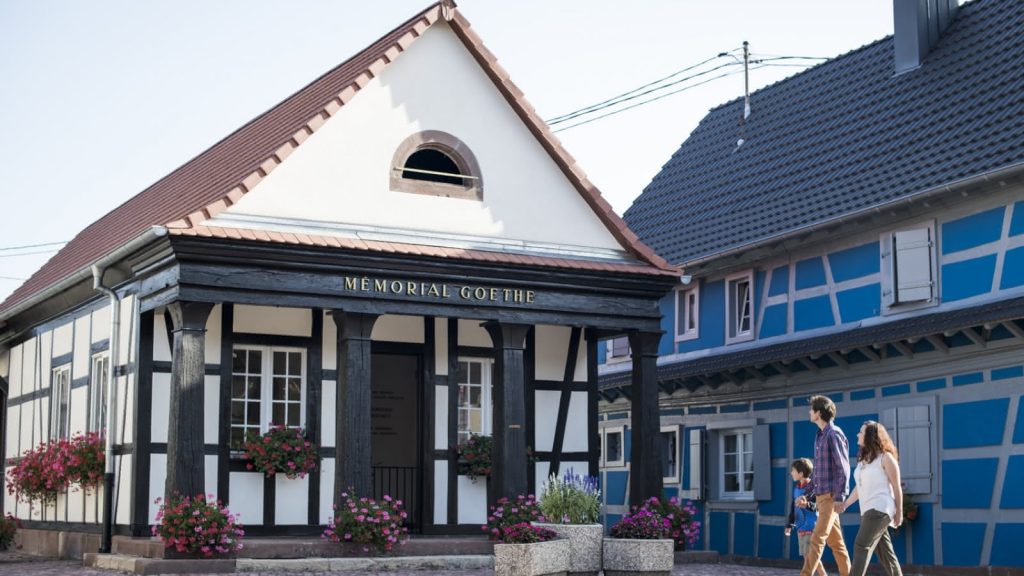Goethe’s Connection to Sessenheim

Sessenheim owes its global renown and its place in the history of universal literature to the idyllic romance that unfolded between Johann Wolfgang Goethe and a pastor’s daughter from Sessenheim, Frédérique Brion, during the years 1770 to 1771. At that time, Goethe was a law student in Strasbourg. This idyllic affair is vividly depicted by the poet in his autobiographical work, « Dichtung und Wahrheit » (Poetry and Truth), particularly in chapters II 9, III 11 and 12, as well as in his correspondence. His affection for « the most charming star in this countryside sky, » of whom he wrote in 1779, « she was more beautiful than I deserved, » combined with his enchantment by the Alsatian nature, which he described as the « living garment of divinity, » played a significant role in inspiring a great lyrical expression seen in the « Sessenheimer Lieder » poems, including works like « Willkommen und Abschied, » « Maifest, » « Erwache Friederike, » and « Heidenröslein. »
Frédérique Brion
Born in April 1752 in Niederroedern, Frédérique Brion was the daughter of J. Jacques Brion, who later became the pastor of Sessenheim, taking over from Pastor H.G. Schweppenhaüser after his passing on August 16, 1760. In early October 1770, Pastor Brion received a visit from F.L. Weyland, a family friend, who was accompanied by a young student named Johann Wolfgang Goethe. An idyllic bond developed between this student and the pastor’s 18-year-old daughter.
Pastor Brion passed away in Sessenheim on October 14, 1787, and he was buried alongside his wife, who had died a year earlier, in the cemetery around the church. Frédérique Brion, now alone, after a stay in Rothau, retired to Meissenheim (Baden) at her sister Salomé’s (« Olivie » to Goethe) and her brother-in-law Pastor Marx’s residence. She passed away there on April 13, 1813, and was buried next to the church. Her epitaph notes that « a sunbeam from the poet conferred immortality upon her. »
Remnants in Sessenheim
In Sessenheim, the tombstones of Frédérique Brion’s parents, the slab marking the spot of their burial, a memorial, the restored barn of the former presbytery, and various items preserved at the Protestant presbytery and in M. Gillig’s collection serve as testaments to this remarkable episode.
The Goethe Museum at the « Au Boeuf » Restaurant

Initiated by German archaeologist and writer Professor Gustave Adolf Muller, the first « Goethe-Frédérique » museum opened its doors on August 10, 1895. It was initially housed in a room at the town hall. M. Muller received assistance and support for his endeavor from M. Guillaume Gillig and schoolteacher M. Loux of Sessenheim. Following disagreements between the municipality and the museum’s promoters, it was relocated to the « Au Boeuf » Restaurant in 1899, owned by none other than M. Gillig. He passed away in Sessenheim on April 23, 1933. His wife, Mme Pauline Gillig (nee Sautter), died on January 4, 1955, leaving the museum to the Wolfgang Sautter family, who fully renovated it. Since 1988, their daughter Christiane has faithfully curated the museum and the Goethe-Frédérique legacy.
The Barn
The presbytery’s barn, where Goethe once amused the village youth to the point where they could no longer work, had deteriorated to the extent that it collapsed on the morning of June 26, 1927. Thanks to numerous donations from friends of the Goethe-Frédérique legacy and a municipal grant, the barn was swiftly rebuilt.
The Memorial
Located in the village center, this small building, a restored and modified former guardhouse, houses various documents relating to Goethe’s life, his studies in Strasbourg, his spiritual transformation through his interactions with Herder, his encounter with the French intellectual world, and his poetic development in connection with the love he experienced in Sessenheim. A replica of the renowned bust of Goethe sculpted by David d’Angers is surrounded by quotations from the poet, Napoleon, and Paul Valéry, all testifying to the universal influence of the writer.
The Tombstones of Frédérique Brion’s Parents
These can be found on the south side outside the Protestant church, in a niche. The actual graves are inside the church. Their location is marked by a cross in the central aisle.

